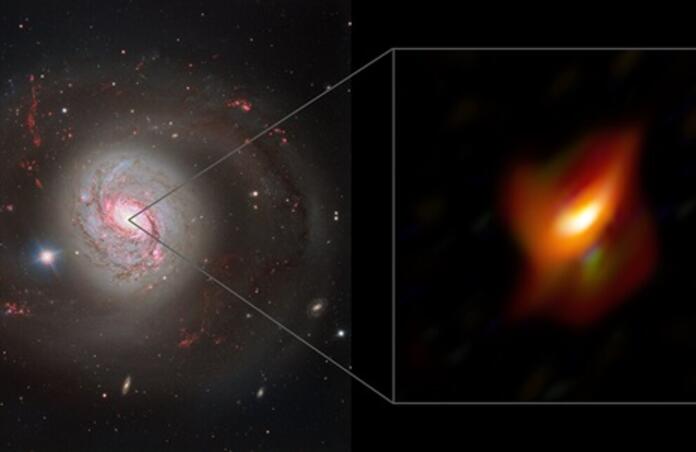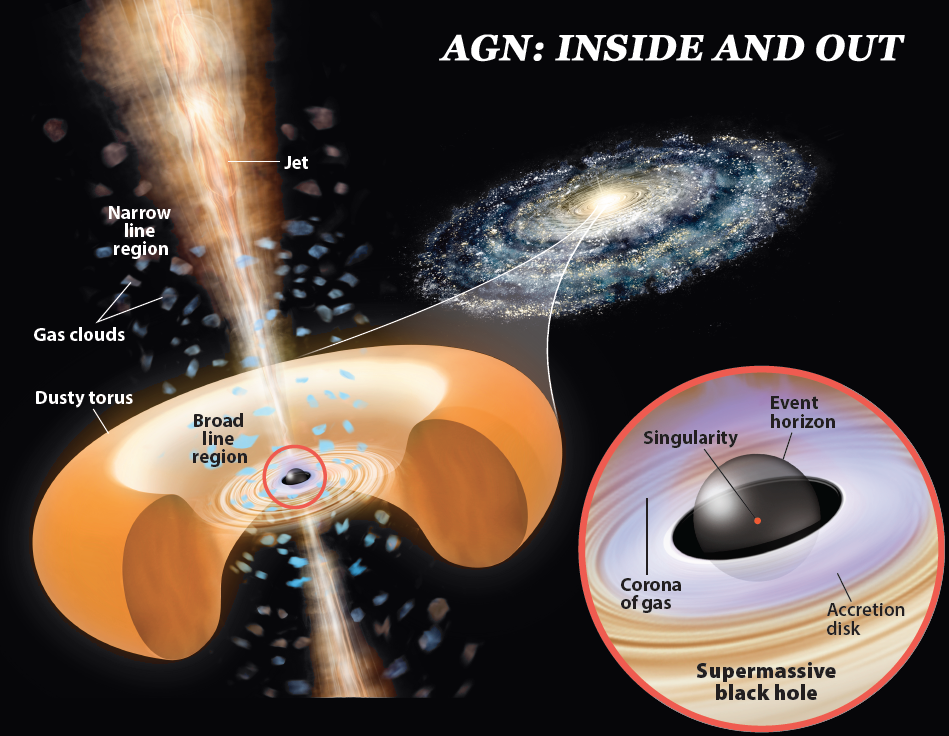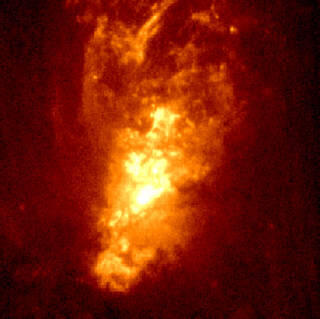MATISSE bites into M77’s dust donut

… and brings to light the supermassive black hole hiding inside that dust torus.
Astronomers used ESO's Very Large Telescope (VLT) in Chile to observe Messier 77, also known as NGC 1068. This spiral galaxy is one of the largest in the Messier catalogue; with an apparent magnitude of 9.6, it is readily observable with a small telescope. The red spots in the image below indicate star-forming regions in its swirling spiral arms, and you can also notice the galaxy’s core being quite bright.
This makes M77 is an excellent example of a Seyfert galaxy, a type which you might remember from the Academy article about Active Galactic Nuclei (AGNs). AGNs contain supermassive black holes, the close surroundings of which release incredible amounts of energy. One problem that has baffled astronomers over the past 7 decades since AGNs were first discovered is why there are two major sub-categories of AGNs: from the first type, we notably receive burst of radio waves, while the second type (which includes Seyferts) is radio-quiet. M77’s centre, with the black hole estimated at 15 million solar masses, is a good example of a galactic core dimmer than we might expect from our observations of other AGNs.

The Unified Model of AGNs states that these differences in appearance are simply due to our perspective from Earth. According to the theory, all AGNs have the same structure, with a torus of dust surrounding the black hole. This thick ring can hence obscure more or less of the light depending on its orientation, i.e., its viewing angle with respect to us observers. M77 has been imaged and studied fairly extensively and thus was a good candidate to probe this Unified Model. However, while warm dust had been spotted near its centre, some authors had suggested that the dust torus was too thin to explain M77’s (relatively) faint AGN even if we viewed it perfectly edge-on.
The new VLT data, combined with some from ALMA and the National Radio Astronomy Observatory's Very Long Baseline Array, helped map the dust distribution at the centre of M77, giving insight into its dual role – feeding the black hole and hiding the extreme light generated in its vicinity. More precisely, the Multi AperTure mid-Infrared SpectroScopic Experiment (MATISSE) instrument on the VLT’s Interferometer enabled the researchers to map the temperature and absorption of the dust clouds around the supermassive black hole. From there, they were able to pinpoint the location of the black hole and establish that the Unified Model is, after all, the best theory to describe the processes in M77.
It is exciting to see MATISSE’s potential to conduct an AGN survey with many more galaxies and to therefore probe the Unified Model further, even more so because the Milky Way’s black hole is likely to have been much more active in the past; thus, appreciating the structure and evolution of AGNs could teach us a lot about our own galaxy’s past.
Cover Image: MATISSE view of M77, ESO/Jaffe/Gámez-Rosas et al.
Image Credits:
1 - "Zooming in" Video, NASA/ESA/Digitized Sky Survey 2. Acknowledgement: A. van der Hoeven
2 - M77, NASA/ESA/A. van der Hoeven
3 - UV view of M77, NASA/ESA
4 - AGN, R. Kelly
5 - Fig. 1 from Gámez-Rosas et al., Nature, 2022


